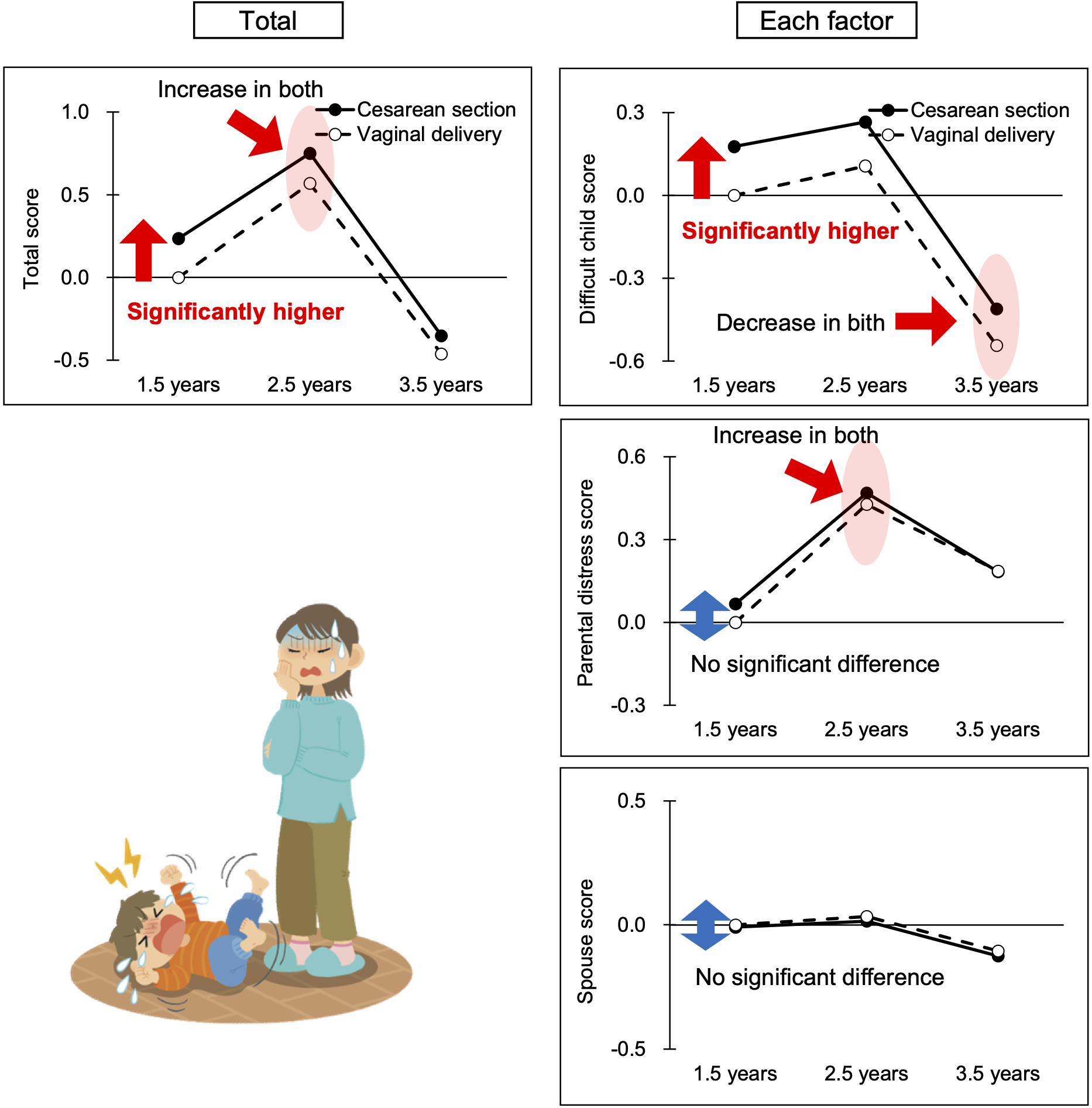Cesarean section and parenting stress: Results from the Japan Environment and Children’s Study
Overview
Parenting stress is a common cause of child maltreatment, poor parenting behaviors, and low quality of life. Parenting stress can be broadly categorized into that caused by parental factors (such as poor health) and child factors (such as demandingness), but it is unclear how parenting stress is impacted by cesarean section, which is on the rise worldwide. A research group led by Dr. Kenta Matsumura, a Senior Lecturer in the Department of Public Health, Faculty of Medicine, University of Toyama, investigated the association between mode of delivery (cesarean section or vaginal delivery) and parental stress between 1.5 and3.5 years after delivery among 65,235 mothers participating in the Japan Environment and Children’s Study (JECS), a large-scale nationwide birth cohort. Parental stress was evaluated using the Parenting Stress Index-Short Form. The results showed that mothers who had had a cesarean section had significantly higher parenting stress, compared with mothers who had had a vaginal delivery, particularly in relation to the “difficult child” factor, but not in relation to the “parental distress” and “spouse” factors (see graphical abstract).
The reason for the higher score for the difficult child factor in the cesarean group may be that psychiatric disorders, neurodevelopmental disorders, allergic disorders, and obesity are more common in children born by cesarean section. It has been reported that children born by cesarean section have a low diversity of intestinal bacteria, which is associated with the development of psychiatric disorders. In addition, the experience of going through the birth canal at birth is important for the subsequent development of the stress response system, and bypassing this experience is reported to result in the inability to respond well to strong stress. Taken together, these findings suggest that parents need to carefully monitor the impact of cesarean sections on their children’s psychiatric disorders, neurodevelopmental disorders, stress reactions, allergic disorders, and obesity over the long term.
The parental distress score was not significantly higher in the cesarean section group than in the vaginal delivery group, but when the items of the Parenting Stress Index-Short Form were examined individually, the score for “experiencing more illness, aches, and pains” was higher for mothers in the cesarean section group. Pain may persist for several years after a cesarean section, so this aspect of the study needs to be taken into consideration in the future.
The limitations of this study include the following. (1) Although the mode of delivery was determined from transcriptions of medical records, there were no data available on whether the cesarean section was elective (scheduled) or urgent. (2) There may be a selection bias where mothers with high parenting stress dropped out of the study and only mothers with low parenting stress remained in the study. (3) Although the analysis was adjusted for many confounding factors, it is not possible to control for all confounders or to draw conclusions about causality. Further research is needed to address these limitations.
In conclusion, this study found that cesarean section was associated with increased parenting stress, especially in terms of the difficult child factor, but it was not associated with the parental distress or spouse factor. In cases of cesarean section, particular attention should be paid to the mental health of both the mother and child.
Graphical abstract

Adjusted* parenting stress scores by mode of delivery at 1.5, 2.5, and 3.5 years after delivery: total score (left) and each factor score (right).
*Adjusted for a total of 18 variables, including age, socioeconomic factors, delivery history, obstetric history, and region of residence
Original article information
Journal
European Psychiatry, 66(1), e18, 1-9, 2023.
Title
Cesarean section and parenting stress: Results from the Japan Environment and Children’s Study
Authors
Kenta Matsumura1,2; Takehiro Hatakeyama2; Taketoshi Yoshida3; Akiko Tsuchida1,2; Hidekuni Inadera1,2; the Japan Environment and Children’s Study Group
1Department of Public Health, Faculty of Medicine, University of Toyama, Toyama, Japan
2Toyama Regional Center for JECS, University of Toyama, Toyama, Japan
3Division of Neonatology, Maternal and Perinatal Center, Toyama University Hospital, Toyama, Japan

